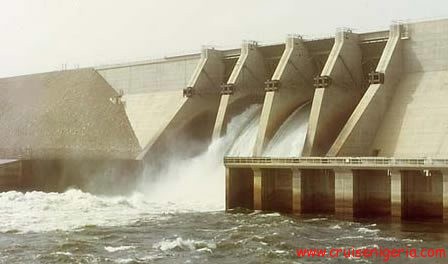This Is How Power Generation/Transmission/Distribution Works In Nigeria
What is electricity?
Imagine that you have water in an overhead tank. The tap is shut. When the tap opens, water pours. This is because there is a “potential difference” between the tank and the tap outlet that causes the water to flow. Then replace tank with power generating station, tap with switch, and water with current that powers your equipment. Makes sense?
How does electricity get into the house?
Electricity is not your typical market product. It is consumed almost immediately it is produced and should be available for use as soon as you flick a switch or turn on a socket.
Electrical power is divided into 3 sectors: generation, transmission and distribution.
We will try to explain how these 3 sectors combine to bring this ‘light’ into our houses.
How is electricity created?
Now here’s the nerdy physics stuff, this dude called Faraday found out that electromotive force (EMF, for short) is generated in a coil (or wire) when a magnetic field moves around it.
You could try it at home: get a wire, wind it and pass a permanent magnet through it. Voila! You have electricity. The problem is, the magnet needs to keep moving to vary the magnetic field to keep generating electricity and the amount of electricity generated isn’t much, e no fit shock you sef.
To generate larger amounts of electricity, we need larger magnetic fields and bigger coils. This is basically how electricity generation works.
.

The generator is presently a Nigerian’s best friend. Your generator has coils and the magnetic field is varied by rotating an electromagnet. That is why you need to pull that I-better-pass-my-neighbour, to start up the rotation after which the engine maintains it.
To generate electricity for a nation, we need bigger generators. Bigger generators can’t be pull-to-start, but still need help rotating the magnetic field. For this we need turbines. These turbines have blades that require a force to push them to rotate.
The force to turn the turbines could come from:
- falling or flowing water (as in hydro stations),
- wind speed (as in wind farms) or
- the impact of hot steam and gases (as in thermal stations).
Generation companies in Nigeria are now referred to as GenCos. Examples of power stations in Nigeria are Kainji hydro power station, Egbin thermal station and Afam thermal station.
Power plants are usually sited far from residential areas because of highly combustible fuels and pollutants like gaseous emissions and noise.
The world is seeking to generate power from renewable energy sources to combat pollution and diminishing reserves of crude oil. We will discuss these other non-traditional means of generating electricity at a later date in more detail.
How then does the generated electricity reach the consumers?
Transmission.
Transmission is the process of evacuating power from the generating stations.
Going back to our overhead tank analogy, this is like the pipe that carries the water from the tank to the tap. The Transmission Company of Nigeria (TCN) is responsible for the transmission network in Nigeria. You may have seen tall towers like those in the figure above. They are called transmission towers and are used for distant power transmission. In addition to the support they provide for the wires carrying electricity, they also help to prevent them from excessive sagging.
Current is responsible for the heat generated in electric wires. The simple equation below shows that for the same amount of transmitted power, increasing the voltage will reduce the current.
This is why voltages are stepped up from the generation station using transformers, prior to transmission. The transmission voltages used in Nigeria are 330kV, 132kV and 33kV. Standard values for transmission enable us to create an interconnecting network of transmission lines known as the grid. So any generating station can generate, step up to any of these voltages, and readily connect to this grid.
When the electricity reaches the transmission station, it is stepped down to a voltage of 11 or 33kV. This voltage is still too high for most of our home appliances. If you look at the nameplates on your appliances you’ll realise that most of them need a maximum of just 240V! How then do we convert 11/33kV to 240V?
Once again, transformer to the rescue. This brings us to the need for distribution.
Distribution companies in Nigeria are now referred to as DisCos. Distribution transformers help step down voltage from 11/33kV to 415V. Distribution transformers are those ones you see on almost every street wey dey blow and spoil anyhow.
You’ll notice that there are 3 wires on the distribution pole before they enter the transformer but they become 4 when they come out of the transformer and into your homes. This is because electricity is generated in a 3-phase pattern. The 4th line is the neutral line, which also goes into the ground or earth to prevent your home appliances from shocking you.
Most household equipment use single phase of electricity. Hence, one of the 3 phases on the distribution pole and the neutral line are used to supply residential buildings. This supply is 230 – 240V.
Summary
To recap, electrical power is generated in a power station (owned by GenCos) at a certain voltage (the force that pushes the current).
The voltage is stepped up in a transmission substation and transmitted via transmission lines (owned by TCN) to distribution stations.
The voltage is stepped down in the distribution stations (owned by DisCos) and the power is then distributed to all of us the end users.
This by no means makes you an expert, but at least it should help you understand the value chain of the electricity used in your home from the grid. I hope you can now sit down at the round table where electricity is being discussed and not be totally lost.
Disclaimer: we accept no responsibility for any accidents suffered while trying to act on anything disclosed in this article. Ehen. You have been warned.




![Video: Sarkodie - Glory ft. Yung L [New Video]](https://blogger.googleusercontent.com/img/b/R29vZ2xl/AVvXsEghnkyBLpY3GVlvZkwvHEiEvPchN5Zc3kKzOejVyXWw515qb72ixrG_m_IwgrDjC4Ou9VzRPmqUD8Fyl7J80b1VnozTIKOCnQ8RD8vdyBI0UMpDaZL1sil8UWmcsd1X4maqT1HgmWFVWhBD/s72-c/Screenshot_2017-09-10-02-07-40.png)



It may be quite easy to locate an electrical contractor to carry out electrical repair work on your home, So, Read studentwritingservices and select the right one can make all the difference. There are many factors to consider before selecting an electrician.
ReplyDelete